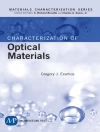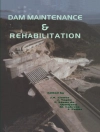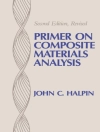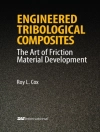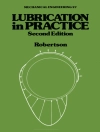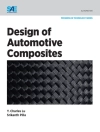Statics is the first volume of a three-volume textbook on Engineering Mechanics. The authors, using a time-honoured straightforward and flexible approach, present the basic concepts and principles of mechanics in the clearest and simplest form possible to advanced undergraduate engineering students of various disciplines and different educational backgrounds. An important objective of this book is to develop problem solving skills in a systematic manner. Another aim of this volume is to provide engineering students as well as practising engineers with a solid foundation to help them bridge the gap between undergraduate studies on the one hand and advanced courses on mechanics and/or practical engineering problems on the other. The book contains numerous examples, along with their complete solutions. Emphasis is placed upon student participation in problem solving. The contents of the book correspond to the topics normally covered in courses on basic engineering mechanics at universities and colleges.Now in its second English edition, this material has been in use for two decades in Germany, and has benefited from many practical improvements and the authors’ teaching experience over the years. New to this edition are the extra supplementary examples available online as well as the TM-tools necessary to work with this method.
Inhoudsopgave
Introduction.- 1 Basic Concepts: 1.1 Force.- 1.2 Characteristics and Representation of a Force.- 1.3 The Rigid Body.- 1.4 Classification of Forces, Free-Body Diagram.- 1.5 Law of Action and Reaction.- 1.6 Dimensions and Units.- 1.7 Solution of Statics Problems, Accuracy.- 1.8 Summary.- 2 Forces with a Common Point of Application: 2.1 Addition of Forces in a Plane.- 2.2 Decomposition of Forces in a Plane, Representation in Cartesian Coordinates.- 2.3 Equilibrium in a Plane.- 2.4 Examples of Coplanar Systems of Forces.- 2.5 Concurrent Systems of Forces in Space.- 2.6 Supplementary Problems.- 2.7 Summary.- 3 General Systems of Forces, Equilibriumof a Rigid Body: 3.1 General Systems of Forces in a Plane.- 3.1.1 Couple and Moment of a Couple.- 3.1.2 Moment of a Force.- 3.1.3 Resultant of Systems of Coplanar Forces.- 3.1.4 Equilibrium Conditions.- 3.2 General Systems of Forces in Space.- 3.2.1 The Moment Vector.- 3.2.2 Equilibrium Conditions.- 3.3 Supplementary Problems.- 3.4 Summary.- 4 Center of Gravity, Center of Mass, Centroids: 4.1 Center of Forces.- 4.2 Center of Gravity and Center of Mass.- 4.3 Centroid of an Area.- 4.4 Centroid of a Line.- 4.5 Supplementary Problems.- 4.6 Summary.- 5 Support Reactions: 5.1 Plane Structures.- 5.1.1 Supports.- 5.1.2 Statical Determinacy.- 5.1.3 Determination of the Support Reactions.- 5.2 Spatial Structures.- 5.3 Multi-Part Structures.- 5.3.1 Statical Determinacy.- 5.3.2 Three-Hinged Arch.- 5.3.3 Hinged Beam.- 5.3.4 Kinematical Determinacy.- 5.4 Supplementary Problems.- 5.5 Summary.- 6 Trusses: 6.1 Statically Determinate Trusses.- 6.2 Design of a Truss.- 6.3 Determination of the Internal Forces.- 6.3.1 Method of Joints.- 6.3.2 Method of Sections.- 6.4 Supplementary Problems.- 6.5 Summary.- 7 Beams, Frames, Arches: 7.1 Stress Resultants.- 7.2 Stress Resultants in Straight Beams.- 7.2.1 Beams under Concentrated Loads.- 7.2.2 Relationship between Loading and Stress Resultants.- 7.2.3 Integration and Boundary Conditions.- 7.2.4 Matching Conditions.- 7.2.5 Pointwise Construction of the Diagrams.- 7.3 Stress Resultants in Frames and Arches.- 7.4 Stress Resultants in Spatial Structures.- 7.5 Supplementary Problems.- 7.6 Summary.- 8 Work and Potential Energy: 8.1 Work and Potential Energy.- 8.2 Principle of Virtual Work.- 8.3 Equilibrium States and Forces in Nonrigid Systems.- 8.4 Reaction Forces and Stress Resultants.- 8.5 Stability of Equilibrium States.- 8.6 Supplementary Problems.- 8.7 Summary.- 9 Static and Kinetic Friction: 9.1 Basic Principles.- 9.2 Coulomb Theory of Friction.- 9.3 Belt Friction.- 9.4 Supplementary Problems.- 9.5 Summary.- A Vectors, Systems of Equations: A.1 Vectors.- A.1.1 Multiplication of a Vector by a Scalar.- A.1.2 Addition and Subtraction of Vectors.- A.1.3 Dot Product.- A.1.4 Vector Product (Cross-Product.- A.2 Systems of Linear Equations.- Index.
Over de auteur
Dietmar Grossreceived his Engineering Diploma in Applied Mechanics and his Doctor of Engineering degree at the University of Rostock. He was Research Associate at the University of Stuttgart and since 1976 he is Professor of Mechanics at the University of Darmstadt. His research interests are mainly focused on modern solid mechanics on the macro and micro scale, including advanced materials, Werner Haugerstudied Applied Mathematics and Mechanics at the University of Karlsruhe and received his Ph.D. in Theoretical and Applied Mechanics from Northwestern University in Evanston. He worked in industry for several years, was a Professor at the Helmut-Schmidt-University in Hamburg and went to the University of Darmstadt in 1978. His research interests are, among others, theory of stability, dynamic plasticity and biomechanics. Jörg Schröderstudied Civil Engineering, received his doctoral degree at the University of Hannover and habilitated at the University of Stuttgart. He was Professor of Mechanics at the University of Darmstadt and went to the University of Duisburg-Essen in 2001. His fields of research are theoretical and computer-oriented continuum mechanics, modeling of functional materials as well as the further development of the finite element method.Wolfgang A. Wallstudied Civil Engineering at Innsbruck University and received his doctoral degree from the University of Stuttgart. Since 2003 he is Professor of Mechanics at the TU München and Head of the Institute for Computational Mechanics. His research interests cover broad fields in computational mechanics, including both solid and fluid mechanics. His recent focus is on multiphysics and multiscale problems as well as computational biomechanics.Nimal Rajapakse studied Civil Engineering at the University of Sri Lanka and received Doctor of Engineering from the Asian Institute of Technology in 1983. He was Professor of Mechanics and Department Head at the University of Manitoba and at the University of British Columbia. He is currently Dean of Applied Sciences at Simon Fraser University in Vancouver. His research interests include mechanics of advanced materials and geomechanics.received his Engineering Diploma in Applied Mechanics and his Doctor of Engineering degree at the University of Rostock. He was Research Associate at the University of Stuttgart and since 1976 he is Professor of Mechanics at the University of Darmstadt. His research interests are mainly focused on modern solid mechanics on the macro and micro scale, including advanced materials,


